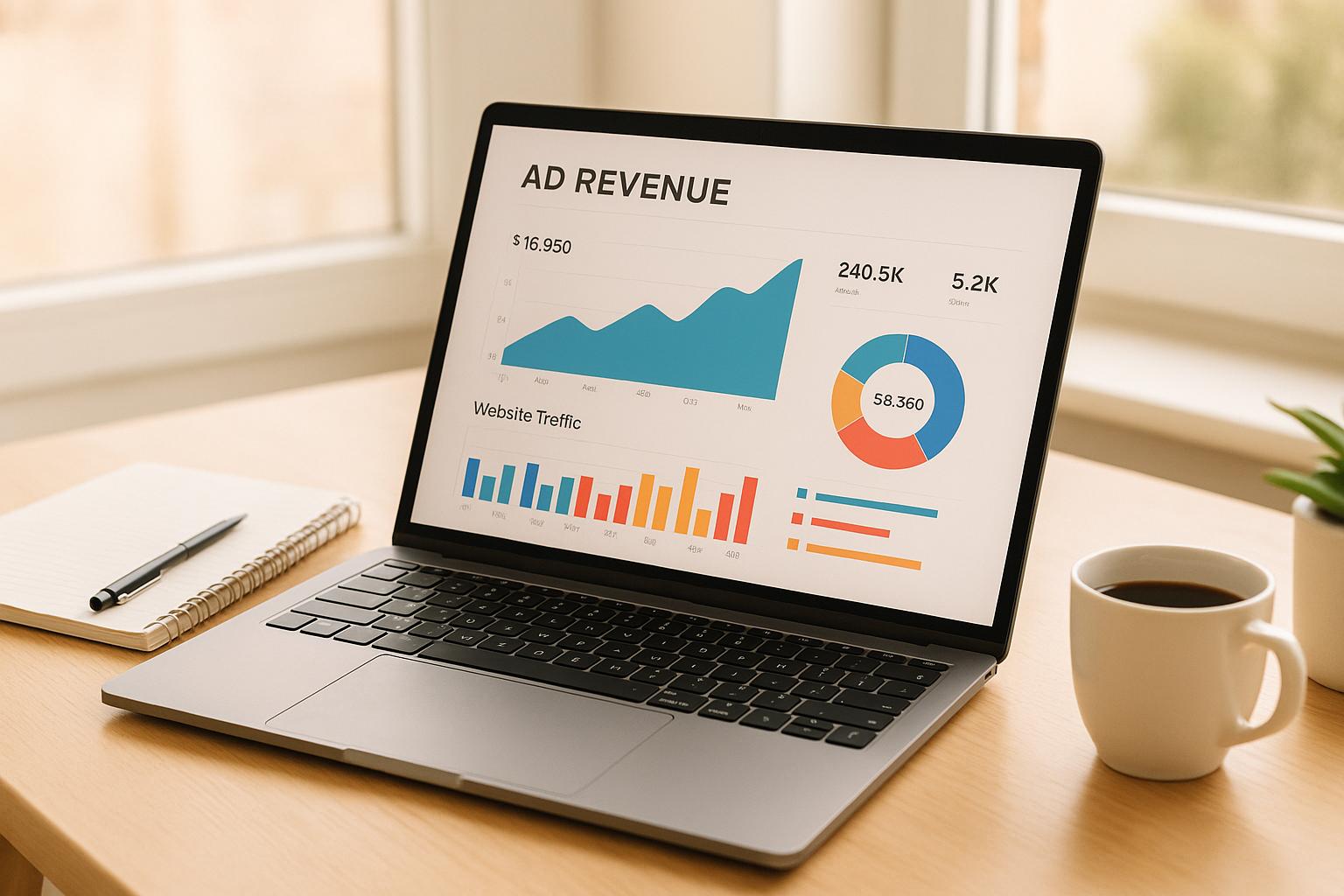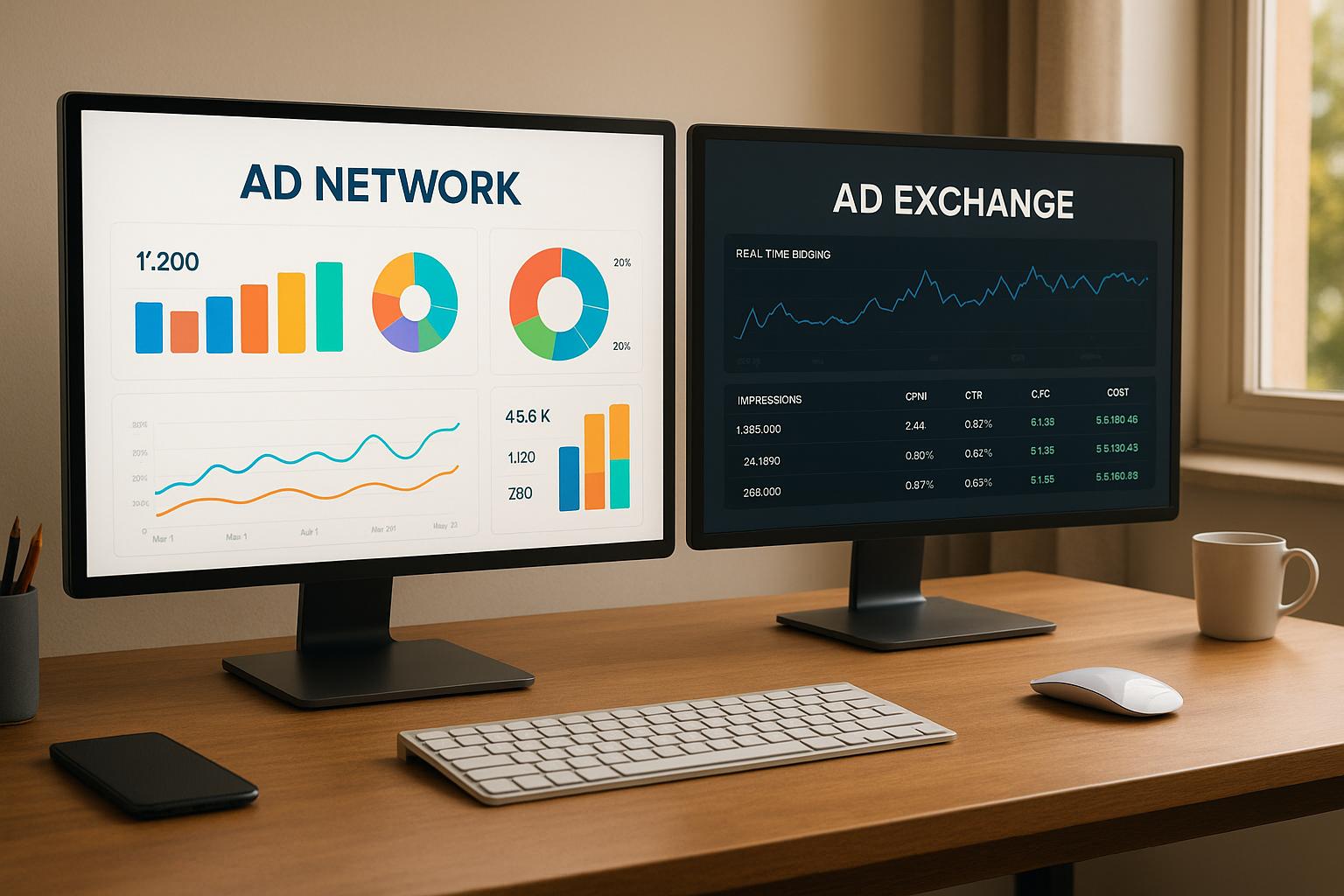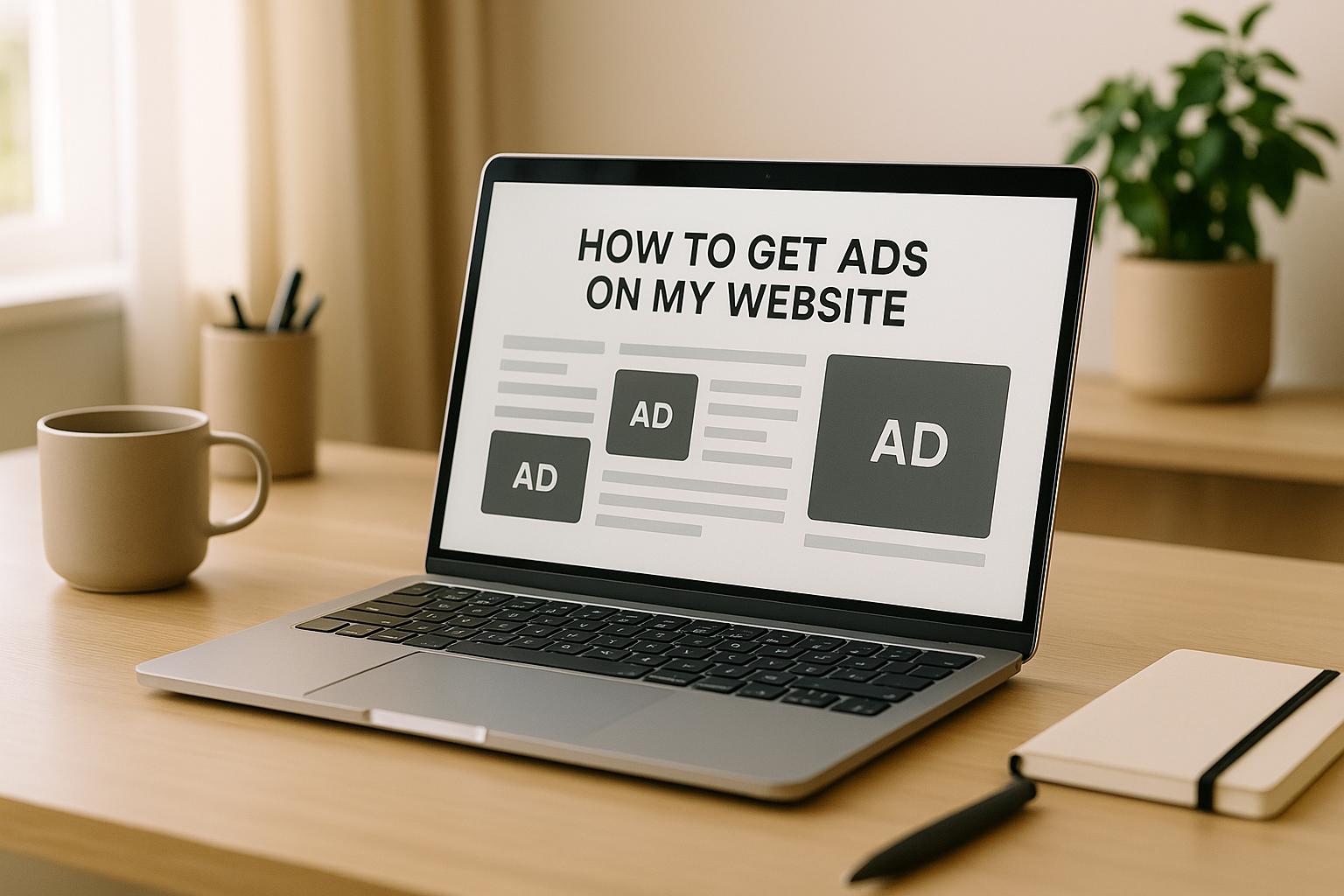- TinyAdz: Perfect for niche publishers with small but engaged audiences. No minimum traffic required, and it offers diverse ad formats like banners, social media ads, and newsletter monetization. Focuses on real user engagement and fraud prevention.
- Google AdSense: Ideal for publishers with steady traffic. Offers a wide range of ad formats and advanced targeting tools. Works on a CPM model, meaning you earn based on impressions, not clicks.
- Media.net: Best for content-heavy sites. Specializes in contextual ads that match page content, without relying on user data. Requires at least 500 daily pageviews for approval.
Quick Comparison:
| Network | Best For | Revenue Model | Key Features | Minimum Traffic |
|---|---|---|---|---|
| TinyAdz | Niche publishers | Revenue sharing | Real user focus, diverse ad formats | None |
| Google AdSense | High-traffic publishers | CPM (impression-based) | Global reach, advanced targeting | Moderate |
| Media.net | Content-heavy sites | CPM | Contextual targeting, no user data needed | 500 daily views |
Key Takeaway:
Choose the network that aligns with your audience size, content type, and revenue goals. TinyAdz is great for small publishers, AdSense offers global reach, and Media.net excels in contextual targeting. Start by understanding your audience and experimenting with ad formats to maximize your earnings.
10 Best Ad Networks For Publishers And Bloggers
1. TinyAdz
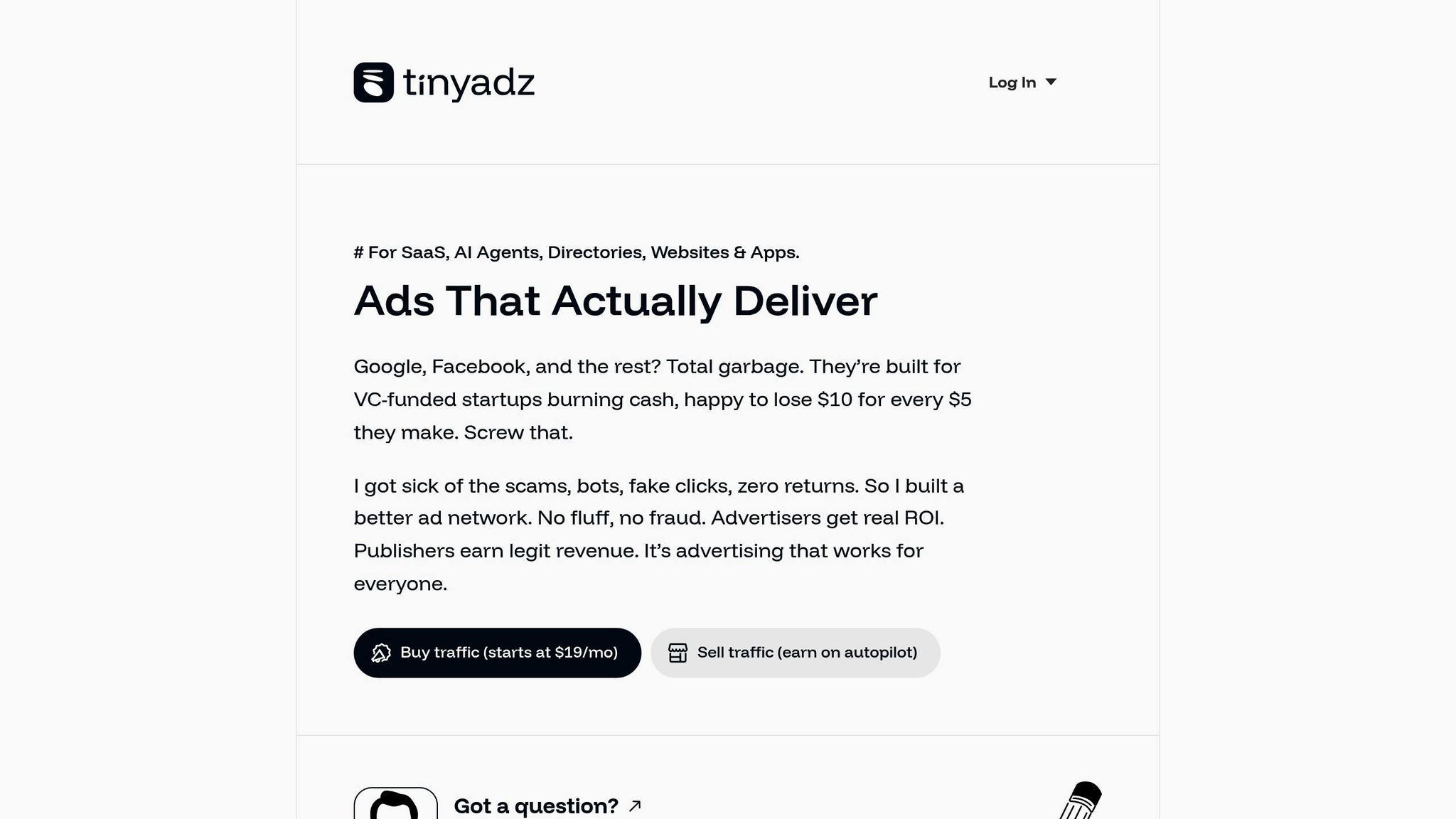
TinyAdz is a specialized advertising network built to connect niche publishers with advertisers looking for verified and engaged audiences. Unlike networks that prioritize sheer volume, TinyAdz focuses on ensuring ad impressions come from real users - not bots. This approach helps publishers generate meaningful engagement and revenue while tackling one of digital advertising's biggest challenges: fraudulent traffic. By prioritizing genuine interactions, TinyAdz creates a strong foundation for sustainable monetization.
Revenue Models
TinyAdz uses a flexible revenue-sharing model that allows publishers to earn without requiring a minimum traffic threshold. This makes it an attractive option for smaller niche publishers with highly engaged audiences. Revenue is generated through display ads tailored specifically to the publisher's audience, emphasizing quality over quantity.
Ad Formats
TinyAdz provides several ad formats to help publishers maximize their earning potential:
- Banner Ads: Turn traditional website spaces into income streams while maintaining a seamless site design.
- Directory Monetization: Generate revenue from directory listings, especially useful for local businesses or niche directories.
- All-Site Traffic Solutions: Monetize traffic from every page of a website, ensuring no visitor goes uncounted.
- Social Media Monetization: Earn from targeted ads displayed to followers across social media platforms.
- Newsletter Revenue: Leverage email newsletters for ad placements, tapping into the high ROI of email marketing.
- Event Monetization: Generate income from virtual or in-person events, aligning with efforts to build and engage communities.
Targeting Capabilities
TinyAdz employs a "personalized matchmaking" strategy to deliver highly targeted ads. This method ensures advertisers connect with the right audiences while aligning ads with the publisher's content and audience preferences.
"Pinpoint the audiences that matter most." - TinyAdz
Studies show that layered targeting can lower acquisition costs by 32% and boost click-through rates by 0.37 percentage points. This precision allows publishers to experiment with different ad placements and formats, optimizing campaigns without requiring large budgets.
Reporting Tools
TinyAdz provides user-friendly reporting tools to track ad performance and earnings. The platform's intuitive interface makes it easy to identify which ad formats and placements are driving the best results.
"See how your ads or earnings are doing with easy-to-understand stats." - TinyAdz
Beyond basic metrics, the reporting tools offer insights into audience engagement and traffic trends. These analytics help publishers make immediate adjustments while also shaping long-term strategies to grow their revenue and audience engagement.
2. Google AdSense

Building on TinyAdz's niche-focused strategy, Google AdSense takes content monetization to a global scale. As one of the most established advertising networks, AdSense connects publishers with advertisers through Google’s extensive ecosystem, offering opportunities for ad placements across millions of websites worldwide.
Revenue Models
Google AdSense has shifted its approach for content ads, moving from a click-based model to one focused on impressions. Publishers now earn 80% of the revenue after deducting advertiser platform fees, while search ads continue with their long-standing 51% revenue share.
"When displaying ads through AdSense for content, publishers will now receive 80% of the revenue after deducting the fee charged by the advertiser platform, whether it is Google's buy-side or third-party platforms." - Google
This CPM (cost-per-thousand-impressions) model is especially valuable for high-traffic websites, as it generates earnings based on the number of views rather than requiring user clicks. This shift opens up more opportunities for publishers to experiment with a variety of ad formats.
Ad Formats
Google AdSense offers a wide range of ad formats, including text ads, display ads, video ads, and responsive ads that adjust automatically for optimal performance across devices. Through the Google Display Network, publishers can reach an impressive 90% of internet users globally. Search ads within the network are particularly effective, boasting an average return on investment of 200%. To maximize results, publishers are encouraged to conduct A/B testing by experimenting with different headlines, descriptions, and calls-to-action to determine which combinations perform best.
Targeting Capabilities
AdSense uses advanced targeting techniques to ensure ads are highly relevant to users. These include:
- Contextual targeting: Matches ads to webpage content and keywords.
- Placement targeting: Allows advertisers to choose specific sites for their ads.
- Personalized targeting: Leverages user behavior and browsing history.
Contextual advertising, in particular, delivers results 1.5 to 2.5 times better than other methods by analyzing content, location data, and user activity. Publishers can refine their ad delivery by studying audience demographics and selecting trending keywords that align with competitive search terms. These targeting tools, combined with detailed reporting, allow publishers to adjust strategies for maximum impact.
Reporting Tools
Google AdSense provides robust reporting tools to help publishers understand their ad performance. These tools offer insights into earnings, traffic trends, and the effectiveness of various ad formats. Publishers can access real-time data on metrics like click-through rates, impressions, and revenue, with the ability to break down results by time periods, ad units, or geographic regions. Beyond the basics, AdSense reports also include audience engagement stats and traffic source analysis. This helps publishers identify which content resonates most with their audience and generates the highest revenue, giving them the information they need to fine-tune their approach.
3. Media.net
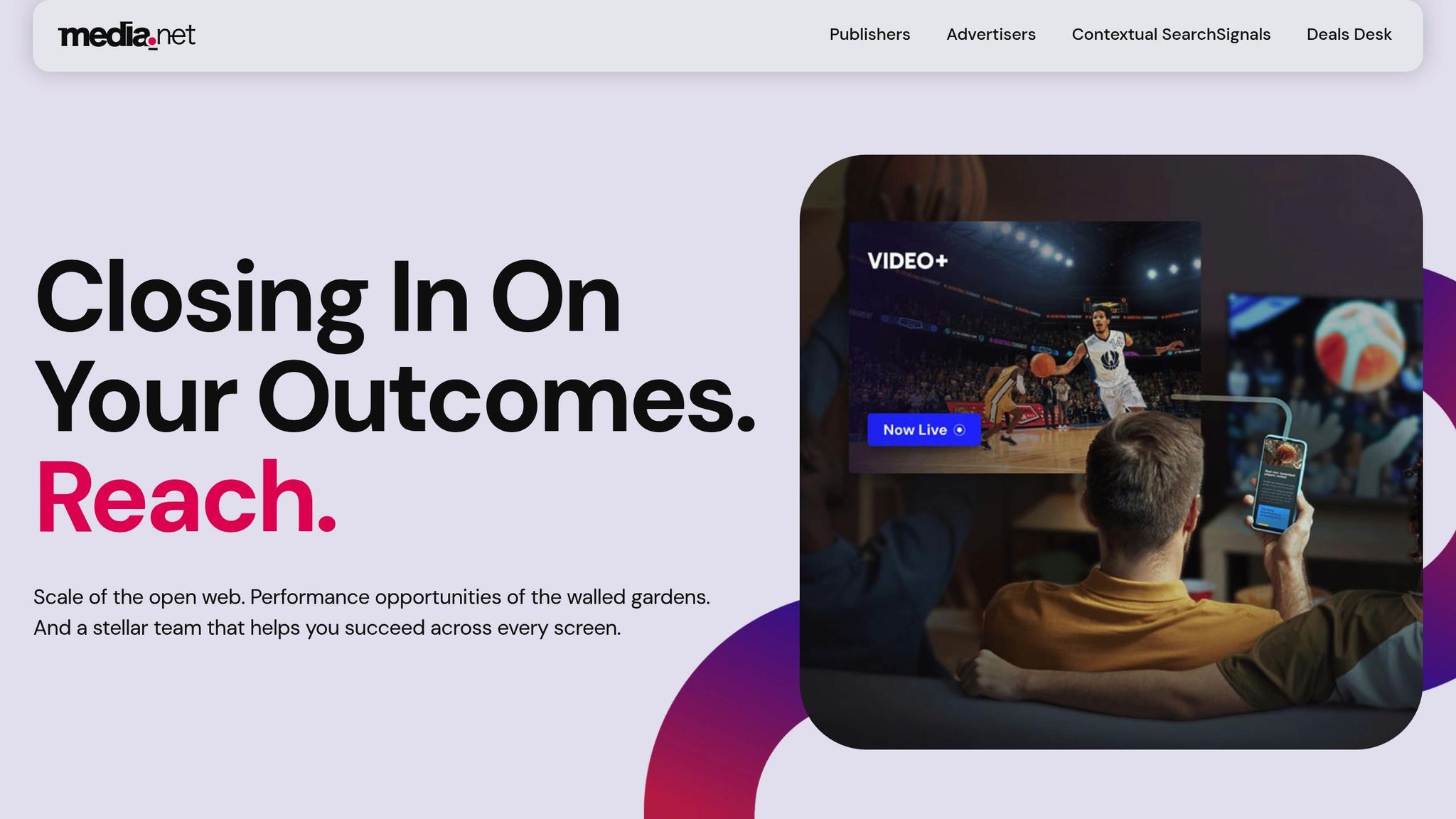
Media.net is a contextual advertising platform that delivers highly targeted ads without relying on user data. As a partner of the Yahoo! Bing Network, it handles millions of ad impressions daily across a network of 500,000 websites. Like other platforms, Media.net focuses on helping publishers maximize revenue through precise ad targeting.
Revenue Models
For digital publishers, finding ways to boost revenue is always a priority. Media.net provides tailored monetization solutions, giving publishers access to exclusive advertising budgets available only to its network partners. On average, publishers see a 55% increase in revenue, with CPM rates ranging from $1.00 to $1.25.
Real-world examples highlight its impact: MilitaryWallet has nearly doubled its revenue with Media.net year after year, while Hireteen.com achieved a six-figure annual income using its dedicated account management and diverse ad offerings.
Ad Formats
Media.net simplifies ad implementation with a single-tag solution that supports multiple ad formats. These include search, display, video, native, and custom options, all designed to adapt seamlessly across devices.
"Deploy one ad tag to access multiple ad formats. Harness the power of search, display, video, native and other customized formats across all devices to suit your site and audience." - Media.net
The platform's contextual and native ads have delivered impressive results, with click-through rates increasing by 1.5x to 4x compared to standard display ads. Additionally, its display-to-search ad format uses keywords to better understand audience intent, helping publishers unlock more revenue potential.
Targeting Capabilities
Media.net uses advanced algorithms and machine learning to analyze page content and identify the most relevant keywords for ad targeting. This ensures the ads align closely with the content while maintaining user privacy by avoiding personal data collection.
"Our contextual ads do not collect audience data and serve hyper-targeted ads relevant to your audience." - Media.net
The platform combines SearchSignals with audience data to create unified graphs that enhance targeting precision. Its proprietary identity graph provides household-level insights, offering more accurate audience targeting than traditional demographic methods. Publishers can also experiment with keyword targeting and ad placements to improve click-through rates and overall performance.
Reporting Tools
Media.net provides robust reporting tools to help publishers evaluate how their ad formats and placements are performing. Its dedicated account management team offers personalized support to optimize revenue. For instance, Saving Centric has relied on Media.net for nearly two years, benefiting from the strategic advice of its account managers.
Publishers also gain access to detailed analytics that track performance across Media.net's vast network. With data from over 500,000 websites, the reporting system offers insights into audience engagement, content effectiveness, and benchmarking opportunities to refine strategies and boost results.
sbb-itb-957fd63
Advantages and Disadvantages
Every advertising network comes with its own set of strengths and challenges. Knowing these trade-offs can help publishers make smarter choices about which platform best fits their content strategy and audience needs.
| Network | Advantages | Disadvantages |
|---|---|---|
| TinyAdz | • No minimum traffic requirements • Hyper-targeted niche audience matching • Personalized matchmaking with advertisers • Clear reporting and analytics • Monetizes websites, social media, newsletters, and events • Verified traffic quality |
N/A |
| Google AdSense | • Large advertiser network for high fill rates • 68% revenue share for publishers • Flexible ad customization options • Strong fraud protection measures • Ad Intents format for privacy-friendly targeting • Extensive documentation and community support |
• Strict approval process and policies • Limited dedicated account management • Performance heavily tied to traffic quality and geography |
| Media.net | • Dedicated account managers for better optimization • Contextual targeting based on page-level intent across 150 million URLs daily • Focuses on contextual targeting without user data collection |
• Requires a minimum of 500 daily pageviews for approval • RPMs can vary if content isn’t aligned with advertiser interests • Fewer customization options compared to some competitors |
This table highlights the main pros and cons of each network. Beyond these, publishers face growing challenges in the marketplace. For instance, nearly 29% of U.S. digital media publishers identify contextual targeting and monetizing risky content as major hurdles heading into 2025. This underscores the need to prioritize platforms that emphasize brand safety and effective content alignment.
Relying on just one ad network can make it harder to optimize revenue. Managing multiple platforms independently takes time and often limits access to premium ad demand. Additionally, trends like "zero-click" searches and AI-driven results are reducing website traffic, putting added pressure on ad revenue.
First-party data has become crucial. A striking 78% of marketers say it’s either impactful or extremely impactful for product discovery. Ad networks that use this data responsibly, while staying privacy-compliant, can offer a major edge.
For publishers with highly focused content, the choice of network becomes even more specific. Google AdSense offers unmatched reach, while Media.net’s contextual technology, analyzing intent across 150 million URLs daily, excels in content-specific targeting. On the other hand, TinyAdz is ideal for publishers looking to connect with niche audiences without worrying about traffic minimums.
As shown in the table, technical requirements and fraud protection vary widely between platforms. Publishers must ensure the platform they choose aligns with their operational strengths. Additionally, ad format and placement matter - poorly placed or intrusive ads can leave visitors with a negative impression of the site.
Ultimately, understanding your audience, your content niche, and the technical demands of each platform is essential. Publishers who combine engaging content with multiple revenue streams are more likely to build a sustainable and successful strategy.
Conclusion
Start by defining your goals - whether that's building brand awareness, generating leads, or driving sales - before diving into platform options. Each platform brings something different to the table, and your choice should align with your specific needs.
TinyAdz is a great fit for digital publishers looking for hyper-targeted advertising options. It allows monetization across websites, social media, newsletters, and even events, all without requiring minimum traffic levels. On the other hand, Google AdSense shines with its vast advertiser network, making it ideal for publishers who have a variety of content and a steady flow of traffic. Meanwhile, Media.net focuses on advanced contextual targeting, which works well for content-heavy sites, though newer publishers might face challenges meeting its traffic thresholds.
The key to success lies in tailoring your monetization strategy to your audience. Tools like Google Analytics can provide valuable insights into your audience's preferences, while experimenting with ad formats - such as banners, native ads, or video ads - can strike the right balance between user experience and revenue. With digital ad revenues expected to hit $258.6 billion in 2024, the right platform, paired with a clear understanding of your audience and goals, can set you up for success.
FAQs
What should digital publishers consider when selecting TinyAdz as their advertising network?
When you opt for TinyAdz as your advertising network, there are a few crucial aspects to keep in mind: revenue potential, variety of ad formats, and how easily it integrates with your platform. TinyAdz caters specifically to digital publishers looking for hyper-targeted advertising solutions, making it a strong option for reaching niche audiences.
Evaluate how the platform matches your audience's demographics and your monetization objectives. TinyAdz sets itself apart by offering a customized experience, providing tools that boost ad performance while keeping the setup process straightforward for publishers.
How does TinyAdz ensure ad impressions are from real users, and why does this matter for niche publishers?
TinyAdz employs cutting-edge verification tools to detect and block bot traffic, ensuring that every ad impression comes from real users. For niche publishers, this is a game-changer - it protects their ad revenue from fraud while giving advertisers the genuine engagement they’re paying for.
By delivering clean, high-quality traffic, TinyAdz doesn’t just protect your ad performance - it strengthens trust with advertisers. This trust opens the door to better monetization options and helps publishers thrive in the long run, especially when catering to specialized audiences.
What are the benefits of using contextual targeting in advertising networks, and how is it different from other targeting methods?
The Advantages of Contextual Targeting for Digital Publishers
Contextual targeting brings several benefits to the table for digital publishers. One standout feature is its ability to serve highly relevant ads by analyzing the content of the webpage a user is actively browsing. This makes ads feel more natural and engaging, rather than intrusive or out of place.
What’s more, contextual targeting doesn’t rely on tracking personal data. Instead, it focuses on matching ads to the content users are currently consuming. This makes it a privacy-friendly option, which is increasingly important as both consumers and regulators push for stronger data protection measures.
Another advantage is its cost efficiency compared to behavioral targeting, which often depends on a user’s browsing history to deliver ads. By focusing entirely on real-time content, contextual targeting ensures ads align with a user’s immediate interests without the need to track their online behavior. This not only enhances ad performance but also fosters trust by respecting user privacy.
